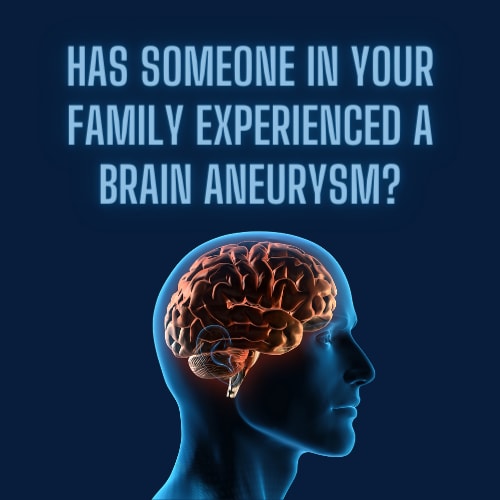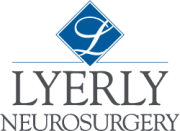Understanding Brain Aneurysm
Understanding Brain Aneurysm Main Content
What is a brain aneurysm?
Within our bodies are important blood vessels called arteries, which carry blood from the heart to the rest of our organs. If a weak spot develops along an artery wall, that artery may begin to bulge, resembling a balloon filling with air.
Aneurysm is the medical term for a bulging artery. If the bulging artery is located in your brain, it is called a brain aneurysm (also known as cerebral aneurysm).
If a brain aneurysm ruptures, meaning the bulge has burst, blood will leak into your brain. This is a life-threatening condition that requires immediate medical treatment.
What causes brain aneurysms?
A brain aneurysm can develop for many reasons. Some people are born with medical or genetic conditions that make them more prone to aneurysm, and other people are at higher risk due to normal aging, lifestyle choices or certain health problems.
Risk factors that may be present at birth include:
- A family history – If two or more blood relatives (particularly a parent or sibling) have been diagnosed with brain aneurysm, research suggests you are at an increased risk of developing familial brain aneurysm. Your doctor may recommend early and regular screening to help monitor the arteries in your brain.
Learn how Aneurysms can Run in Families Join our Research Study - Inherited medical disorders – Some medical conditions that run in families can cause chronic high blood pressure or weakened blood vessels. These conditions include polycystic kidney disease, Ehler-Danlos syndrome and fibromuscular dysplasia.
- Arteriovenous malformation (AVM) in the brain – A small number of people are born with a condition called cerebral AVM, which means some arteries and veins in their brain are not connected properly. This can lead to abnormal blood flow.
Risk factors that occur over time include:
- SMOKING
- older age (especially people over 50)
- alcohol or drug abuse, particularly cocaine use
- high blood pressure
- hardened or narrowed arteries (a condition called atherosclerosis)
- head injury
- an infection in the blood vessel
In general, women are more likely than men to develop a brain aneurysm, and adults are more prone than children.
What are the symptoms of a brain aneurysm?
A brain aneurysm that has not ruptured often does not cause any symptoms and may not pose an immediate health risk, especially if the aneurysm is small.
Over time, an aneurysm may grow larger and press up against delicate nerves and tissue in the brain. If this occurs, you may gradually experience one or more of the following symptoms:
- headache
- pain above or behind one eye
- blurred or double vision
- difficulty speaking or swallowing
- numbness or weakness on one side of the body, including the face, an arm or leg
- seizures
If a brain aneurysm ruptures, it usually causes a sudden, severe headache — often described as the worst headache of one's life. You also may experience the following sudden symptoms:
- loss of consciousness
- confusion
- a seizure
- nausea and vomiting
- stiff neck
- sensitivity to light
- numbness or weakness
- blurred or double vision
A ruptured brain aneurysm is a medical emergency that requires immediate treatment.
How are brain aneurysms diagnosed?
Because brain aneurysms are relatively uncommon in the general population — and not all brain aneurysms require treatment — people are not usually screened for this condition unless they are at risk for familial brain aneurysm or predisposing conditions.
For that reason, many people who have a brain aneurysm are not aware of their condition. In fact, their aneurysm may be discovered by accident, e.g., during tests for other neurological conditions.
If your doctor suspects you may have a brain aneurysm due to your gradual or sudden symptoms, he or she will likely order one or more of the following tests:
- A computerized tomography (CT) scan to capture X-ray images of the arteries in your brain. Your doctor may pair this scan with a special dye injected into your blood stream, so he or she can observe how well blood is flowing in your brain. This is called CT angiography.
- A magnetic resonance imaging (MRI) scan to capture 3-D images of your brain. Your doctor may use a variation of this test, called MR angiography or MRA, which shows the arteries in your brain in greater detail.
- A spinal tap, also known as a lumbar puncture, to examine a sample of the fluid (called cerebrospinal fluid) that surrounds your brain and spinal cord. If there is bleeding in your brain, red blood cells will likely show up in your cerebrospinal fluid.
- A cerebral angiogram is a minimally-invasive test that combines X-rays and a special dye to see inside the arteries in your brain.
How are brain aneurysms treated?
If your doctor confirms you have an aneurysm that has not ruptured, he or she will determine whether to treat you right away or to monitor your aneurysm over time. Your doctor will weigh several important factors, including the size and location of the aneurysm (together with its potential for rupture), and your overall health.
Should you require treatment — either to prevent a rupture from occurring, or to repair an aneurysm that has already burst — your physician will decide which of the following procedures is most suitable for you:
- Aneurysm clipping is an "open" surgical treatment that has been used for more than 50 years to seal brain aneurysms. During the procedure, a neurosurgeon removes a piece of skull located near the aneurysm. Once the surgeon finds the bulging artery, he clamps a tiny metal clip at the neck of the aneurysm to stop blood from flowing into it.
- Aneurysm coiling, also known as endovascular coiling, is a minimally invasive treatment that does not require open brain surgery. During the procedure, a surgeon threads a small, flexible tube called a catheter through an artery until it reaches the aneurysm. He then pushes a tiny coiled wire through the catheter and into the bulging artery. Once inside the aneurysm sac, the coil reduces or blocks blood flow, significantly reducing or eliminating the risk of rupture.
- Flow diversion is the most recent treatment for brain aneurysm approved by the Food and Drug Administration. During this minimally invasive procedure, a metallic mesh tube called a flow diverter is placed inside the artery with the aid of a catheter. The mesh tube blocks the entrance to the aneurysm sac, preventing blood from flowing into it.
Brain Aneurysm Care at Lyerly Neurosurgery
Since Lyerly Neurosurgery was founded in 1934, our physicians have cared for thousands of people who need treatment for a brain or spine condition.
Today our practice continues to build upon a legacy that blends compassion, safety and innovation. Our neurosurgeons provide the full spectrum of evidence-based care, including the latest minimally invasive procedures that can only be offered by neurosurgeons with advanced training and experience.
If you or a loved one has been diagnosed with a brain aneurysm, you'll find the care and support you need at Lyerly Neurosurgery. We offer the most advanced tools and the most experienced team in the region dedicated to aneurysm care. In partnership with Baptist Medical Center Jacksonville, our team provides all emergency and preventive aneurysm treatments available, including aneurysm clipping, coiling and flow diversion by specialists who are fellowship trained in endovascular neurosurgery.

Join Aneurysm Research Study
We’re looking for people diagnosed or treated for a brain aneurysm and any of their biological first-degree blood relatives, (parent, full siblings, children) to join our Familial Brain Aneurysm Study.
Our goal is to learn more about the hereditary ties of aneurysms, and ultimately save lives. There is no cost for participants and the process is simple and straightforward and offers free imaging to first-degree relative participants.
If you or a loved one have experienced a brain aneurysm please consider joining our study. Show your interest by completing this form:
Are you at risk for an aneurysm?
Five criteria can help you find out. Ask your primary care physician if you are a good candidate for aneurysm screening.
